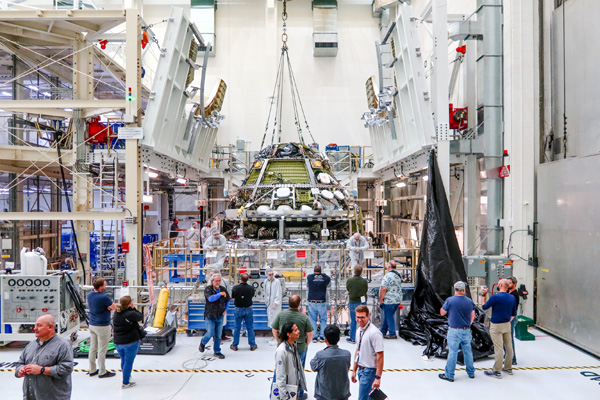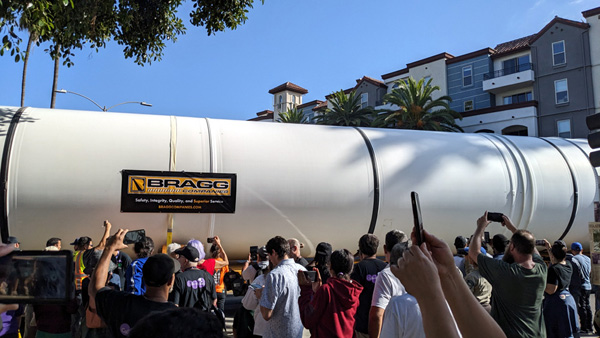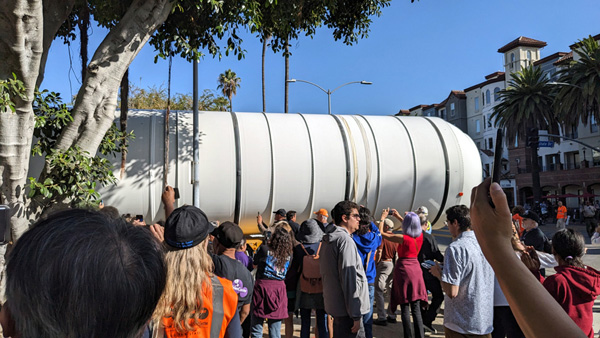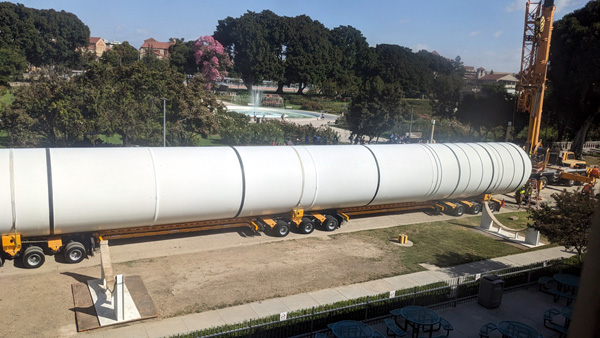 NASA / Danny Nowlin
Start Your Engines: NASA to Begin Critical Testing for Future Artemis Missions (Press Release)
NASA / Danny Nowlin
Start Your Engines: NASA to Begin Critical Testing for Future Artemis Missions (Press Release)
NASA will begin a new RS-25 test series on October 5, the final round of certification testing ahead of production of an updated set of engines for the
SLS (Space Launch System) rocket. The engines will help power future
Artemis missions to the Moon and beyond.
A series of 12 tests stretching into 2024 is scheduled to occur on the Fred Haise Test Stand at NASA’s Stennis Space Center near Bay St. Louis, Mississippi. The tests are a key step for lead SLS engines contractor Aerojet Rocketdyne, an L3Harris Technologies company, to produce engines that will help power the SLS rocket, beginning with
Artemis V.
“NASA and our industry partners continue to make steady progress toward restarting production of the RS-25 engines for the first time since the space shuttle era as we prepare for our more ambitious missions to deep space under Artemis with the SLS rocket,” said Johnny Heflin, liquid engines manager for SLS at NASA’s Marshall Space Flight Center in Huntsville, Alabama. “The upcoming fall test series builds off previous hot fire testing already conducted at NASA Stennis to help certify a new design that will make this storied spaceflight engine even more powerful.”
For each Artemis mission, four RS-25 engines, along with a pair of solid rocket boosters, power the SLS rocket, producing more than 8.8 million pounds of thrust at liftoff. Following a “test like you fly” approach, all 12 tests in the new series are scheduled for at least 500 seconds, the same amount of time the engines must fire during an actual launch.
The 12-test series will use developmental engine E0525 to collect data for the final RS-25 design certification review. The engine features a second set of new key components, including a nozzle, hydraulic actuators, flex ducts and turbopumps.
The components match design features of those used during the initial certification test series completed at the south Mississippi site in June.
“Testing a second set of hardware during this next phase of our certification test series will give us repeatability to ensure we have sound processes for building our new engines,” said Mike Lauer, RS-25 deputy program manager at Aerojet Rocketdyne. “The successful testing of the brand-new certification engine proved our engineering was sound – that the new design is capable of meeting requirements at operating extremes and durations. This next test series will help confirm our manufacturing processes will reliably create production engines that will meet these same requirements.”
Operators will fire the engine at power levels varying between 80% and 113% to test performance in multiple scenarios. The first four Artemis missions are using modified space shuttle main engines that can power up to 109% of their rated level.
New RS-25 engines will power up to the 111% level to provide additional thrust. Testing up to the 113% power level provides a margin of operational safety.
The longest test of the new series is planned for 650 seconds. Crews will conduct a gimbal test of the engine to ensure that it can pivot as needed to help SLS maintain stability and trajectory during flight.
The October 5 test is scheduled for 550 seconds and will fire the RS-25 engine up to 111% power level.
Overall, a total of 6,350 seconds of hot fire is planned for the series. With completion of the campaign, it is anticipated that all systems will be “go” to produce 24 new RS-25 engines using the updated design for missions beginning with Artemis V.
“Testing at the historic Fred Haise Test Stand is critical to ensure that our astronauts fly safely,” said Chip Ellis, project manager for RS-25 testing at NASA Stennis. “The test team takes great care to ensure these engines will operate as designed to launch NASA payloads and astronauts to the Moon and beyond.”
Through Artemis, NASA will use innovative technologies and collaborate with commercial and international partners to explore more of the Moon than ever. The agency will use what is learned on and around the Moon to take the next giant leap of sending the first astronauts to Mars.
Source: NASA.Gov





















